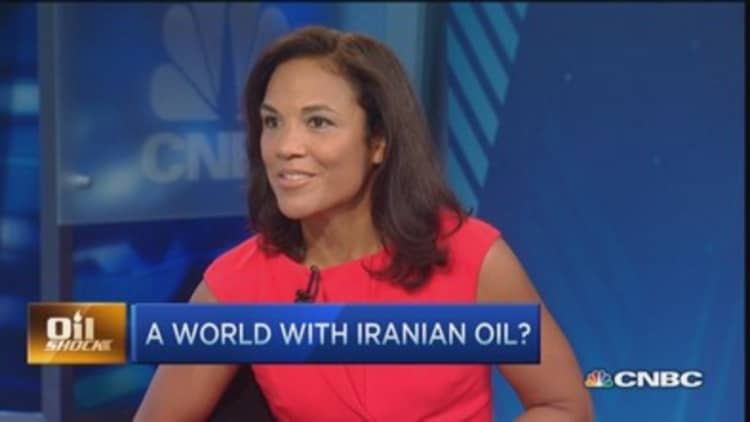
Saudi Arabia has increased the amount of crude it is pushing into an already oversupplied world market at a time when a surge in ETF investing could exaggerate any drop in oil prices, according to Citigroup analysts.
In a new report, the Citigroup energy analysts say inflows into crude-linked exchange traded funds have created "significant froth" in the oil market and could exacerbate a downside correction in the second quarter, given the market's bearish fundamentals.
While some analysts say a low may have been reached, the industry is braced for another leg down in oil prices this quarter that could result in a bottoming for the market. Citigroup previously said the bottom could be as low as the $20s per barrel and that U.S. shale producers would be seriously impacted if the prices stayed at $50 or lower. West Texas Intermediate crude futures were trading at $52.35 per barrel.
Factors cited for bearish fundamentals include a jump in Saudi production to 10.3 million barrels a day and daily exports reaching 7.5 million barrels in March, a time when demand is typically softer. The output increase, between 700,000 and 1 million barrels a day since mid-February, could be very bearish particularly if the increased exports make their way into the already oversupplied U.S. market.
"Amidst much speculation over Saudi motivation, a simple, rational argument is that the Saudis are finally coming to terms with the structural changes afoot in the oil market, namely weaker demand and U.S. shale, and are pursuing their goal of revenue maximization which works along side favorable geopolitical outcomes for the kingdom," they wrote.
The Citi analysts say West Texas Intermediate futures might already have fallen into the $30s per barrel, were it not for the inflows into ETFs. They said estimated net holdings for the largest unlevered and levered ETFs quadrupled in the first quarter.
The United States Oil Fund (USO) is the largest crude oil ETF. According to ETF Securities, the oil ETFs held about a third of the combined open interest in May WTI futures traded on the Nymex and ICE. Last week, WTI was set to roll a huge share of the outstanding U.S. oil futures contracts from May into June.
Other oil ETFs include iPath S&P GSCI Crude Oil Total Return Index ETN and PowerShares DB Oil Fund.
U.S. oil production, meanwhile, could flatten out the rest of the year, but that would merely stabilize the oversupply in world markets, not eliminate it, the analysts noted. U.S. refineries, meanwhile, seek imported heavy crude over the lighter U.S. crude, and producers will be vying to supply it.
Read More
The Citi analysts say the oversupply, now seen in record crude inventory in the U.S., could ultimately turn into oversupply of refined products. This could particularly be the case in Europe, where demand could remain light and refinery runs stay high into the summer.
U.S. crude inventories in the midcontinent should draw down from May to August, but then the refinery maintenance season begins with high levels of supply, resulting in storage issues for the Gulf Coast region.
Read More
Citi analysts also said uncompleted wells in the U.S., or DUCs (drilled but uncompleted wells) weigh on the market. These inactive wells could total 600 to 2,200 for oil. They say if these wells were cleared across the span of a year, the annual impact could be another 0.12 to 0.44 million barrels a day in production.
Read MoreGasoline bonus finally starts to pay off
Correction: This story has been updated to include that additional Saudi oil would be bearish for market


